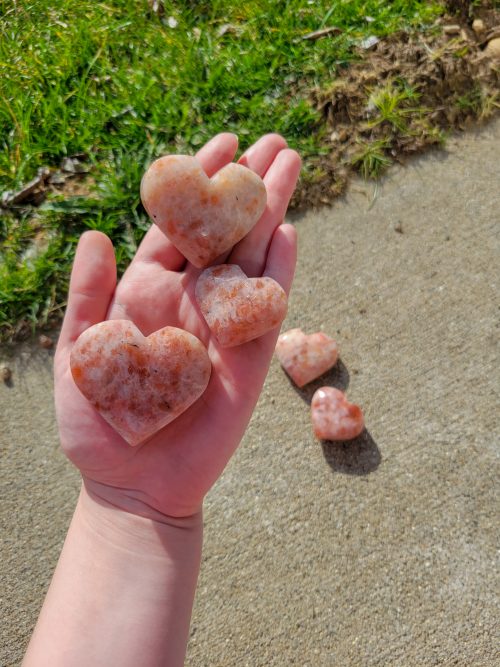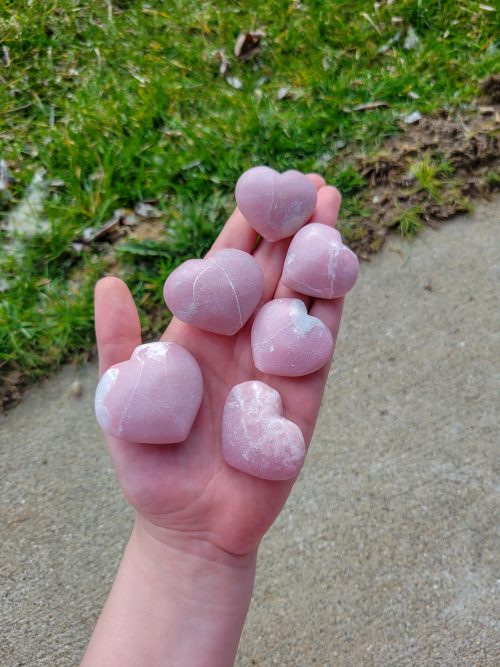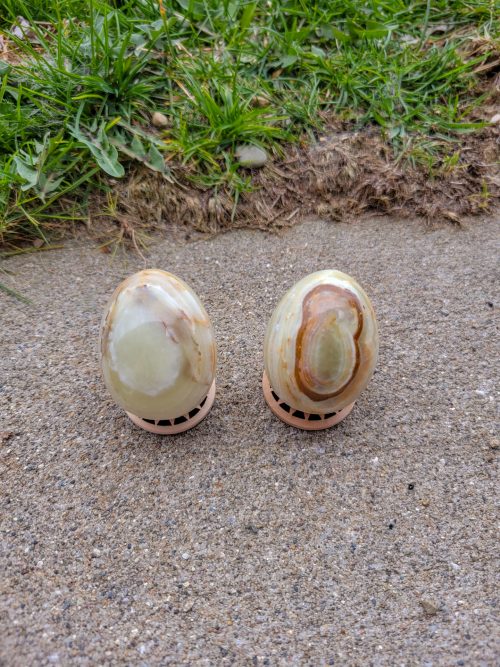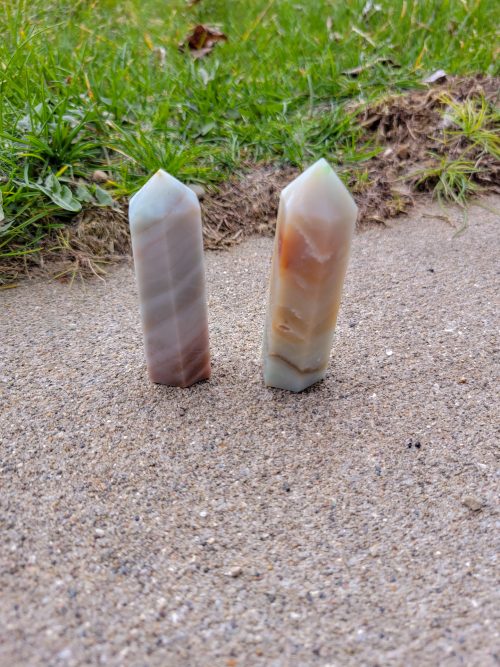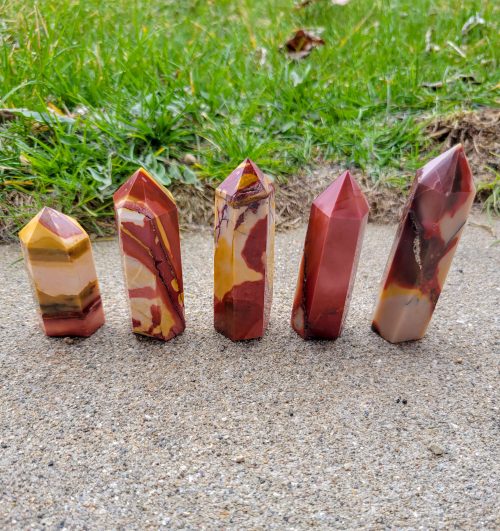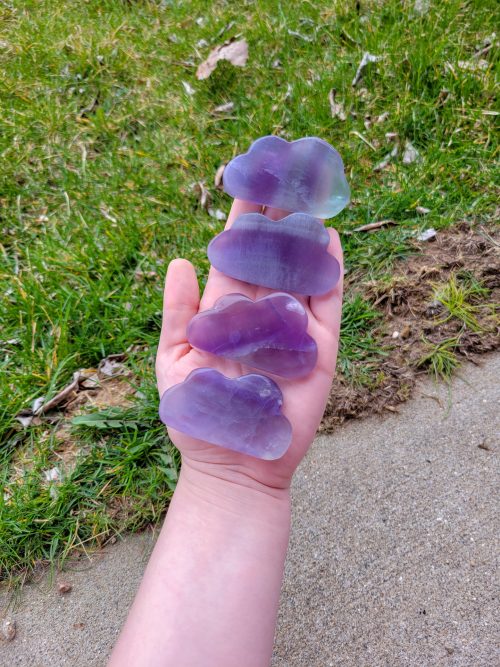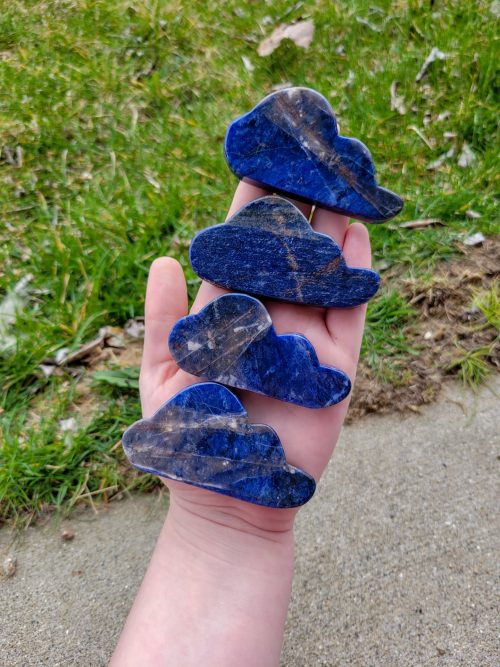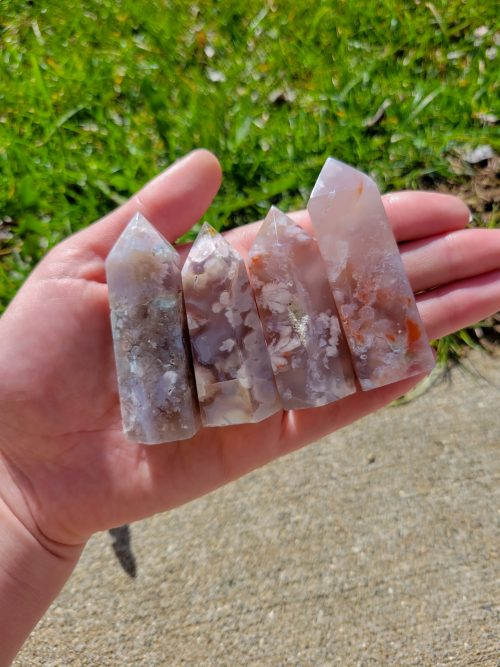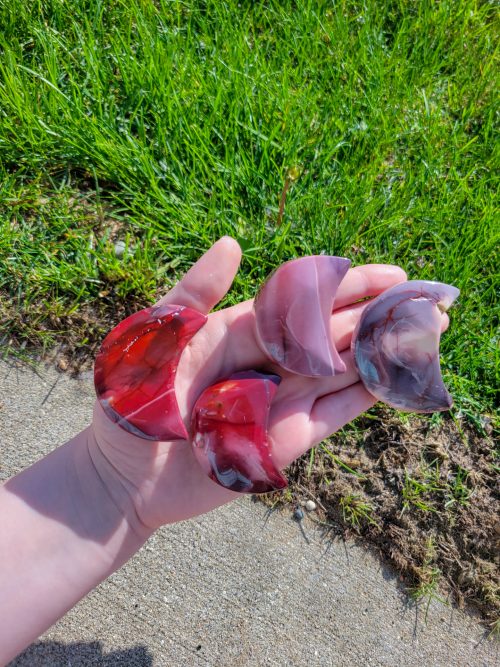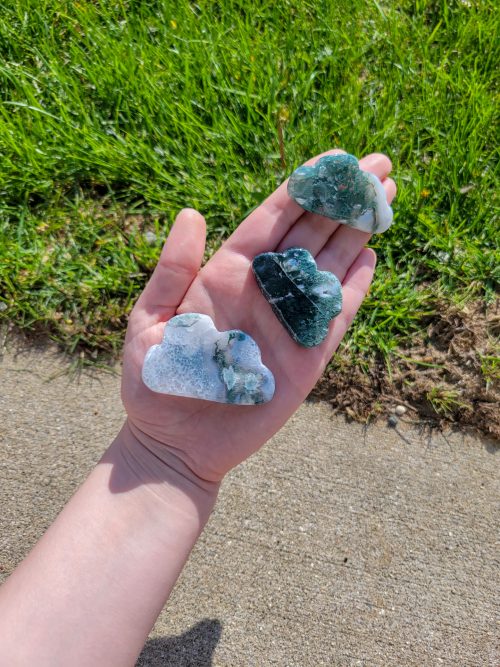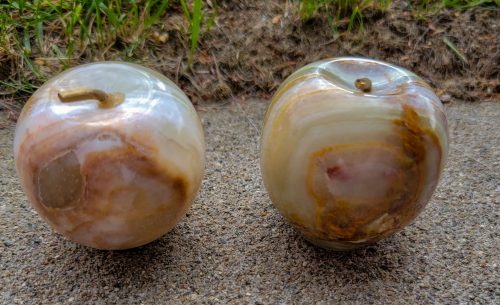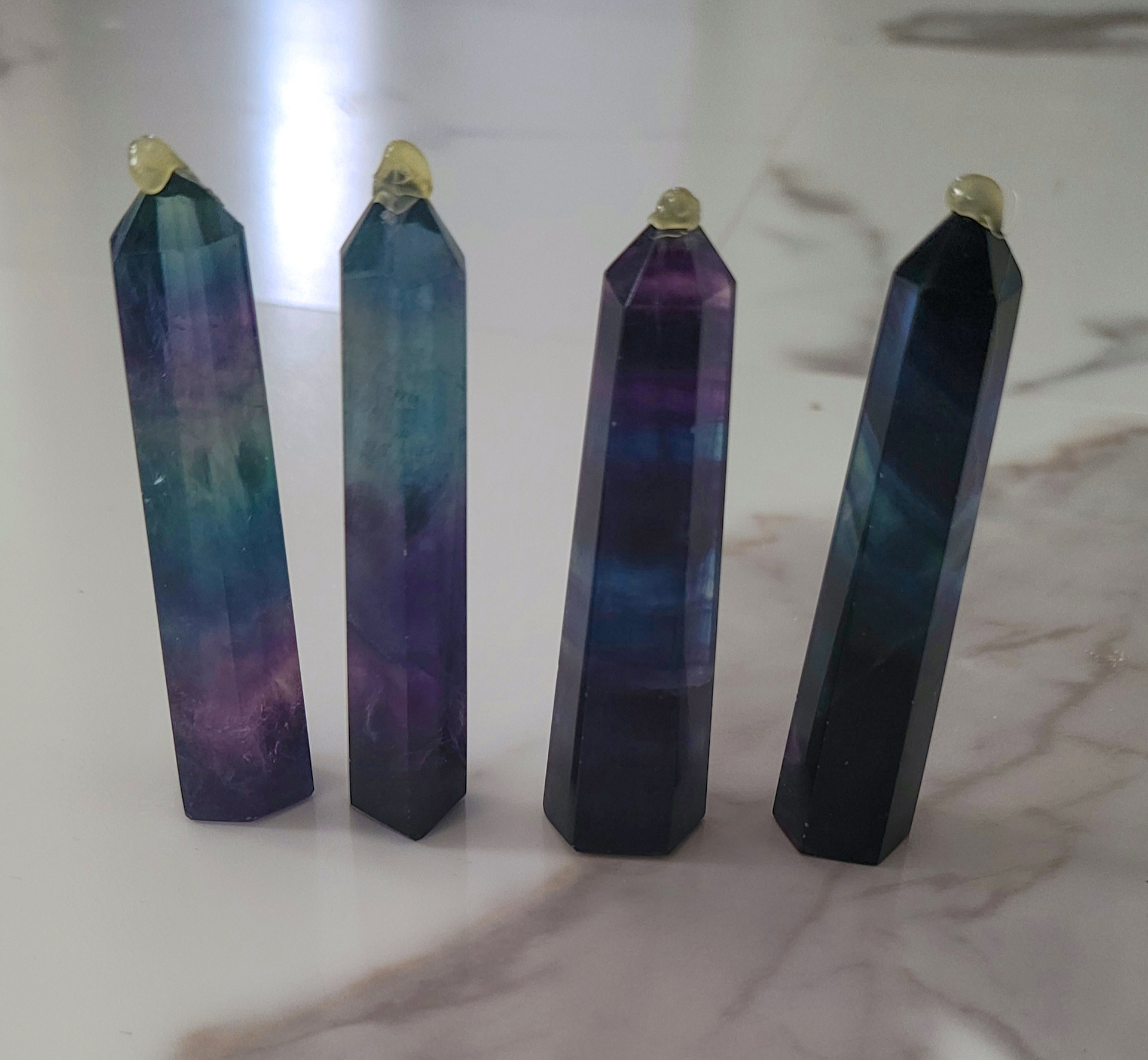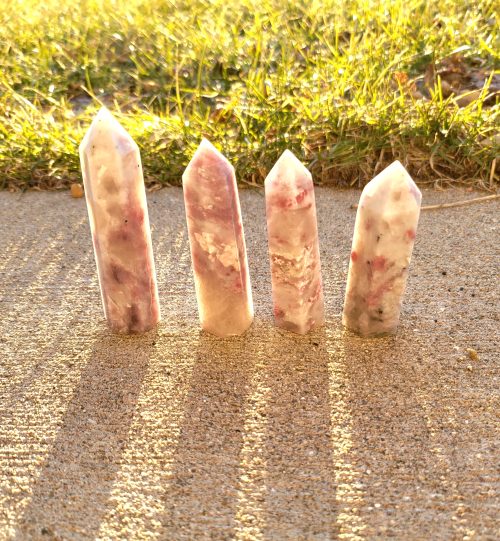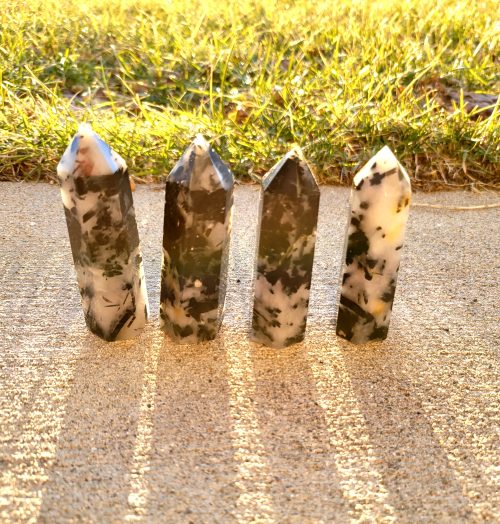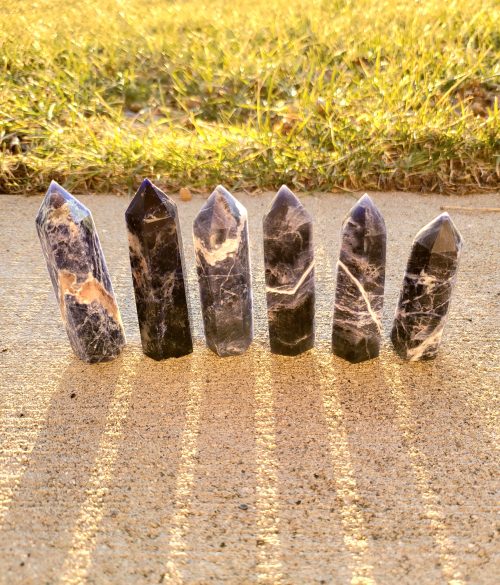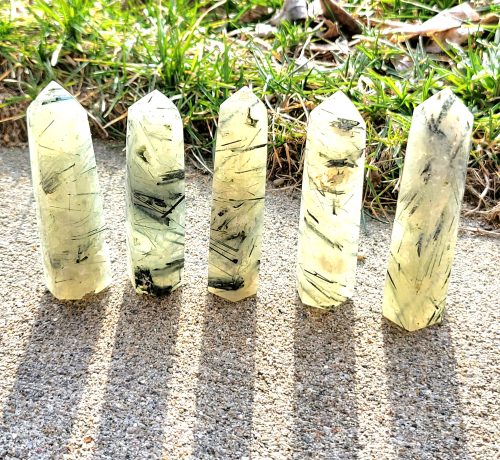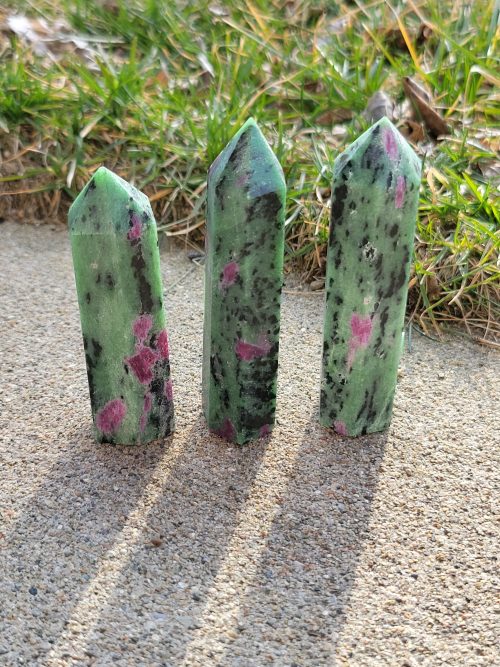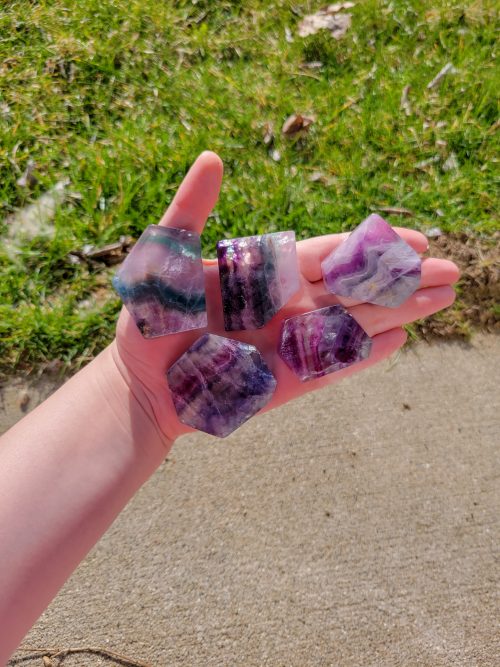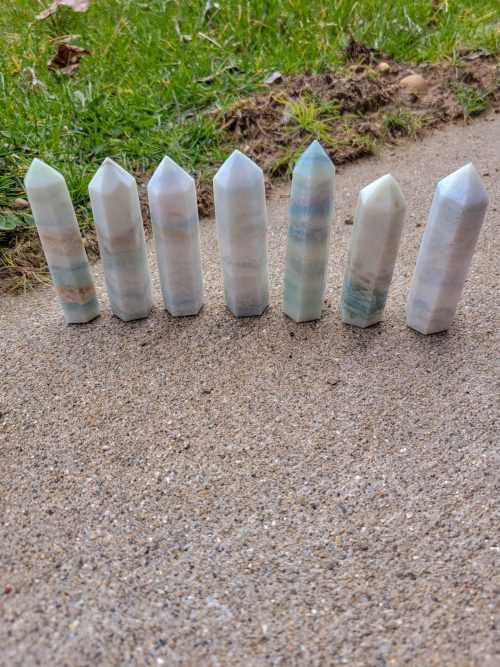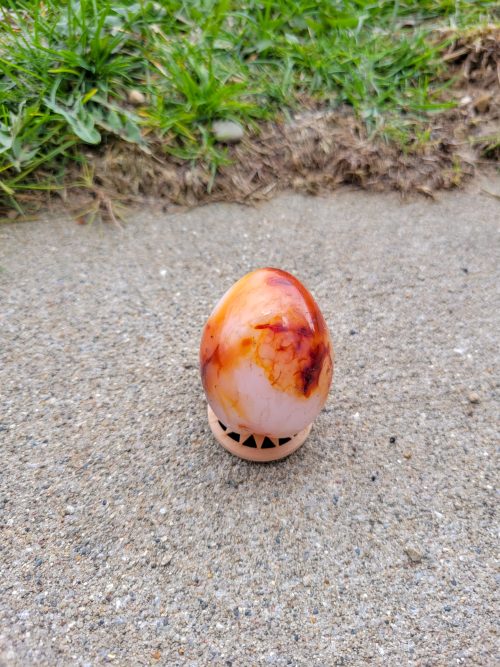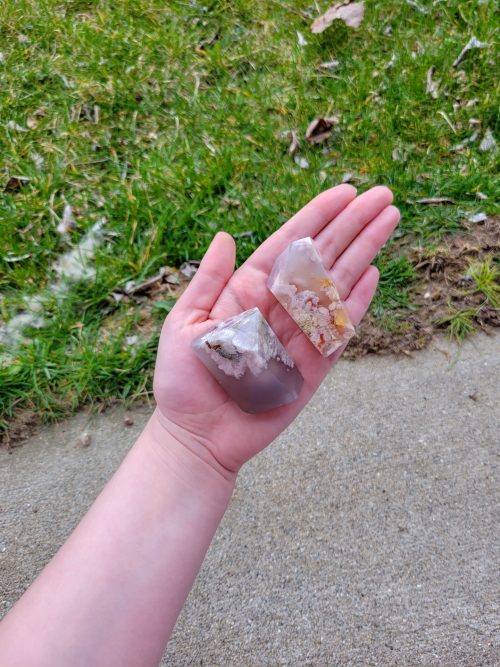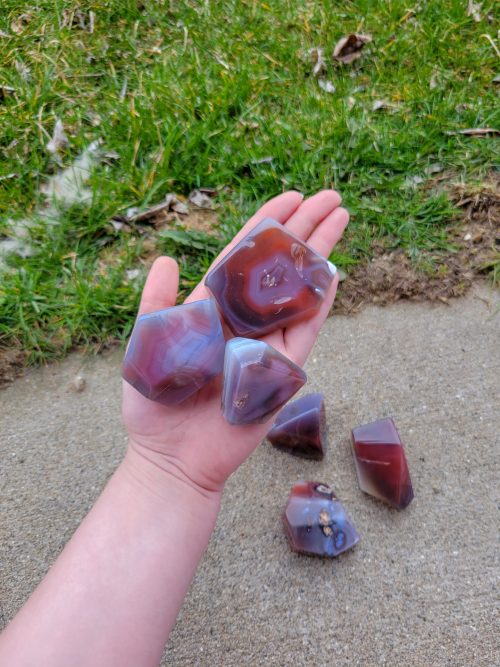-
5cm Wide Sunstone is a plagioclase feldspar. The glitter-like sheen in this stone comes from inclusions that are most commonly hematite but can also be goethite, pyrite, or copper (rare). This beautiful stone is formed in molten lava and can be found in many places around the world such as Australia, Canada, China, Congo, India, Mexico, Norway, Russia, Sri Lanka, Tanzania, the U.S. ***Due to natural variations in stones, appearance will vary***
-
5cm Wide Pink opal is formed by bubbling water near volcanic ash. It dissolves the silica and forms in nodules from volcanic activity. Most specimens contain pink opal mixed with minerals such as rhyolite. These beautiful specimens are only found in Peru and Australia. ***Due to natural variations in stones, appearance will vary***
-
5cm Tall Onyx is a banded variety of the oxide mineral chalcedony. Onyx and Agate are similar in that they are both varieties of layered chalcedony. The difference between the two is that agate has curved banding and onyx has parallel banding. The colors of the banding range from virtually every color possibility. Green Onyx is mainly found in Brazil, India, Madagascar, Mexico, Peru, and USA ***Due to natural variations in stones, appearance will vary***
-
7.5cm Tall Caribbean calcite is a very new combination mineral that was recently found in 2019 in Pakistan. It's a combination of a very light ocean Blue Calcite and light brown and white aragonite. Although recently discovered, this mineral is not expected to stick around for long unless more deposits are found in other areas. ***Due to natural variations in stones, appearance will vary***
-
6.25cm Wide Fluorite is composed of fluorine and calcium and is formed in hydrothermal veins in the Earth's crust. This mineral can be found in all colors of the rainbow with different hues. The different colors in Fluorite are caused by impurities within the mineral. The deeper colors are found in well-formed crystals. Fluorite was originally discovered in Illinois in 1842 but is no longer mined in the US. It can be found in China, South Africa, Mongolia, France, and Russia. ***Due to natural variations in stones, the appearance will vary***
-
8cm Wide Sodalite is a rare mineral formed inside igneous rocks crystalized as a result of sodium-rich magma. The blue color comes from the rock that Sodalite is formed in; nepheline syenite, trachyte, and phonolite. Although the sodalite-bearing rock is rare, it can most commonly be found in the US, Canada, and Africa. ***Due to natural variations in stones, the appearance will vary***
-
6cm Tall Flower agate gets its name from the flower-like formations within the crystal's body. These crystals are volcanic rocks that are mainly composed of chalcedony and quartz. These crystals can vary in color; from pink to a dark grey/purple. Recently discovered in Madagascar, these crystals are believed to go back to 2000 BC. ***Due to natural variations in stones, the appearance will vary***
-
6cm Wide Moss agate is a semi-precious stone. It is a variety of Chalcedony and it formed from silicon dioxide. The field of this stone is a milky white or clear quartz with blue and green inclusions that form as a result of oxides in the mineral. The dendritic inclusions are mainly made from manganese or iron that grow into patterns to give it the moss look. ***Due to natural variations in stones, the appearance will vary***
-
5cm Tall Onyx is a banded variety of the oxide mineral chalcedony. Onyx and Agate are similar in that they are both varieties of layered chalcedony. The difference between the two is that agate has curved banding and onyx has parallel banding. The colors of the banding range from virtually every color possibility. Green Onyx is mainly found in Brazil, India, Madagascar, Mexico, Peru, and USA ***Due to natural variations in stones, appearance will vary***
-
2 x 1 x 7cm Fluorite is composed of fluorine and calcium and is formed in hydrothermal veins in the Earth's crust. This mineral can be found in all colors of the rainbow with different hues. The different colors in Fluorite are caused by impurities within the mineral. The deeper colors are found in well-formed crystals. Fluorite was originally discovered in Illinois in 1842 but is no longer mined in the US. It can be found in China, South Africa, Mongolia, France, and Russia. ***Due to natural variations in stones, the appearance will vary***
-
5cm - 6cm Rhodonite is a silicate mineral usually found in metamorphic rocks that are known to have other manganese minerals in them. The manganese is how Rhodonite gets its color. These beautiful minerals can be found in Argentina, Australia, Brazil, Canada, and many other places. ***Due to natural variation in stones, appearance will vary***
-
9cm Tall Agate is a translucent form of microcrystalline quartz. These crystals form inside of igneous rocks over a long period of time and get their banding from years of siliceous groundwater building up in the cavities of these rocks. What makes this mineral so beautiful and unique is that the color variations and banding patterns are completely dependent on the environmental factors around them. This makes it so that every formation is different and there are no two formations that are the same! ***Due to natural variations in stones, the appearance will vary***
-
7.5cm - 8.5cm Tall Tourmaline is a complex family of minerals composed of aluminum borosilicate mixed with magnesium, iron or other metals. Tourmaline can come in a variety of colors depending on its proportion of these components. These colors are red, pink, yellow, brown, green, blue, black, or violet colors. This mineral can be found mainly in Brazil and many parts of Africa. ***Due to natural variations in stones, appearance will vary***
-
8cm Tall Tourmaline is a complex family of minerals composed of aluminum borosilicate mixed with magnesium, iron or other metals. Tourmaline can come in a variety of colors depending on its proportion of these components. These colors are red, pink, yellow, brown, green, blue, black, or violet colors. This mineral can be found mainly in Brazil and many parts of Africa. ***Due to natural variations in stones, appearance will vary***
-
7cm - 8cm Tall Sodalite is a rare mineral formed inside igneous rocks crystalized as a result of sodium-rich magma. The blue color comes from the rock that Sodalite is formed in; nepheline syenite, trachyte, and phonolite. Although the sodalite-bearing rock is rare, it can most commonly be found in the US, Canada, and Africa. ***Due to natural variations in stones, the appearance will vary***
-
8cm Tall Prehnite is a pale green to gray, glassy silicate mineral that contains calcium and aluminum. This mineral commonly lines cavities in igneous rocks. It also occurs as stalactite masses. Prehnite is a secondary or hydrothermal mineral and is often associated with zeolites. Prehnite has been found in Italy, Germany, France, Scotland, and New Jersey in the United States. Tourmaline most commonly occurs as an accessory mineral in igneous and metamorphic rocks. Well formed crystals of tourmaline can form in cavities and fractures during hydrothermal activity. ***Due to natural variations in stones, appearance will vary***
-
7.5cm - 8.5cm Tall Zoisite is a mineral that forms during the metamorphism and hydrothermal alteration of igneous, metamorphic, and sedimentary rocks. Anyolite is a very colorful rock composed mainly of zoisite. It is also known as "ruby in zoisite" because it is composed of green zoisite with bright red ruby. Rubies are corundum gems that are predominately red. The color can range from orangish red to purplish red. The most desirable color range is a pure vibrant red to a slightly purplish red. Ruby in Zoisite was discovered and is still only found in Tanzania ***Due to natural variations in stones, appearance will vary***
-
4cm Wide Fluorite is composed of fluorine and calcium and is formed in hydrothermal veins in the Earth's crust. This mineral can be found in all colors of the rainbow with different hues. The different colors in Fluorite are caused by impurities within the mineral. The deeper colors are found in well-formed crystals. Fluorite was originally discovered in Illinois in 1842 but is no longer mined in the US. It can be found in China, South Africa, Mongolia, France, and Russia. ***Due to natural variations in stones, the appearance will vary***
-
5cm Tall Carnelian is a part of the Chalcedony family. It is formed when two silica minerals with different crystal structures grow together such as quartz and moganite. The firey orange and red colors come from iron oxides in the mineral. Carnelian can be found in Brazil, India, and Uruguay. ***Due to natural variations in stones, the appearance will vary***
-
5cm Wide Flower agate gets its name from the flower-like formations within the crystal's body. These crystals are volcanic rocks that are mainly composed of chalcedony and quartz. These crystals can vary in color; from pink to a dark grey/purple. Recently discovered in Madagascar, these crystals are believed to go back to 2000 BC. ***Due to natural variations in stones, the appearance will vary***
-
4.5cm x 4cm x 2.5cm Agate is a translucent form of microcrystalline quartz. These crystals form inside of igneous rocks over a long period of time and get their banding from years of siliceous groundwater building up in the cavities of these rocks. What makes this mineral so beautiful and unique is that the color variations and banding patterns are completely dependent on the environmental factors around them. This makes it so that every formation is different and there are no two formations that are the same! ***Due to natural variations in stones, the appearance will vary***

